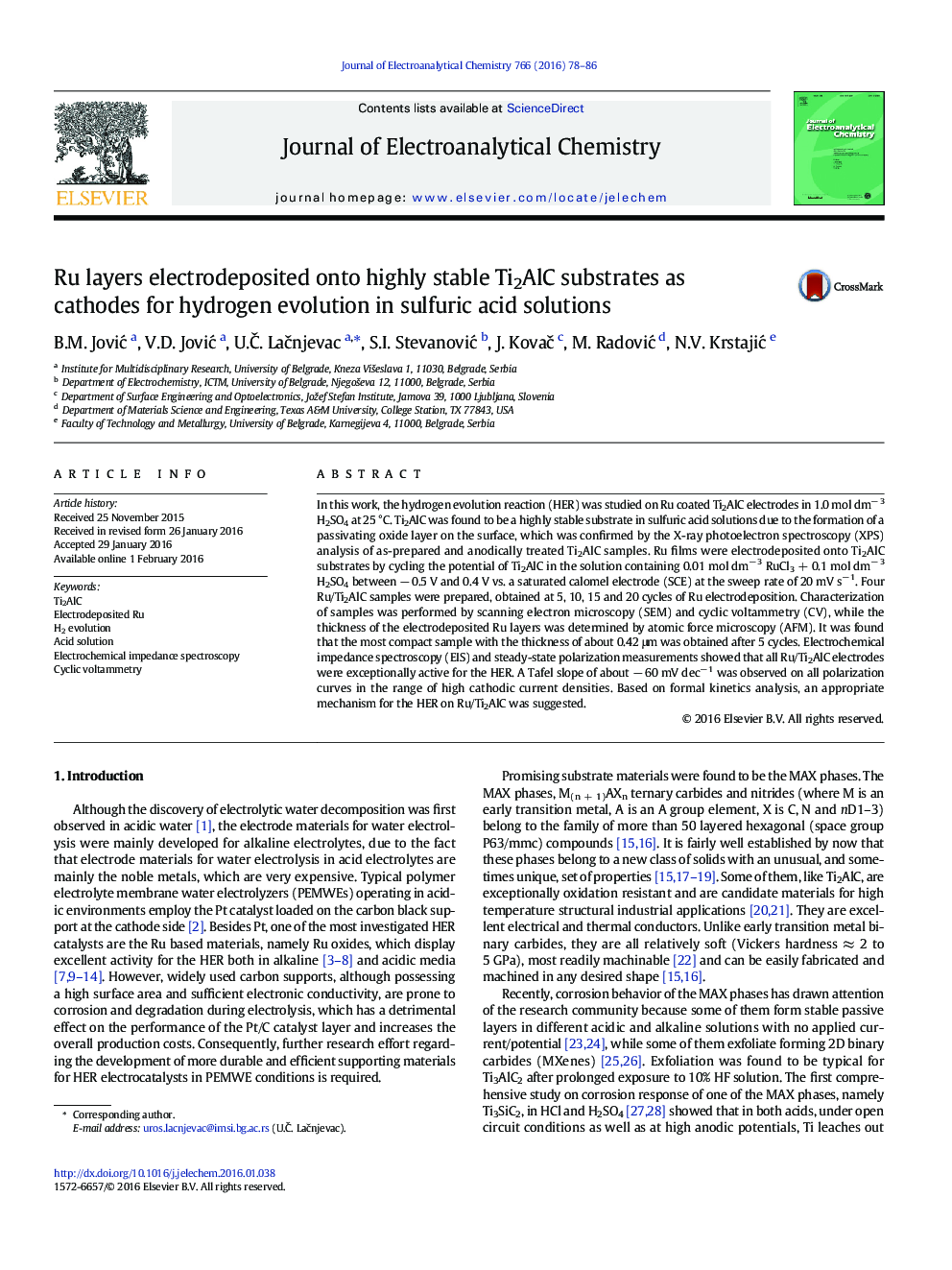| کد مقاله | کد نشریه | سال انتشار | مقاله انگلیسی | نسخه تمام متن |
|---|---|---|---|---|
| 218012 | 463178 | 2016 | 9 صفحه PDF | دانلود رایگان |

• Ti2AlC was examined as a substrate material for HER electrocatalysts in acid media.
• It showed excellent stability at high anodic potentials in H2SO4 solutions.
• Ru films were deposited by cycling the potential of Ti2AlC in RuCl3 + H2SO4 solution.
• Thickness of Ru films varied from 0.42 to 2.8 μm depending on the number of cycles.
• All Ru/Ti2AlC electrodes were exceptionally active for HER in 1 M H2SO4 at 25 °C.
In this work, the hydrogen evolution reaction (HER) was studied on Ru coated Ti2AlC electrodes in 1.0 mol dm− 3 H2SO4 at 25 °C. Ti2AlC was found to be a highly stable substrate in sulfuric acid solutions due to the formation of a passivating oxide layer on the surface, which was confirmed by the X-ray photoelectron spectroscopy (XPS) analysis of as-prepared and anodically treated Ti2AlC samples. Ru films were electrodeposited onto Ti2AlC substrates by cycling the potential of Ti2AlC in the solution containing 0.01 mol dm− 3 RuCl3 + 0.1 mol dm− 3 H2SO4 between − 0.5 V and 0.4 V vs. a saturated calomel electrode (SCE) at the sweep rate of 20 mV s− 1. Four Ru/Ti2AlC samples were prepared, obtained at 5, 10, 15 and 20 cycles of Ru electrodeposition. Characterization of samples was performed by scanning electron microscopy (SEM) and cyclic voltammetry (CV), while the thickness of the electrodeposited Ru layers was determined by atomic force microscopy (AFM). It was found that the most compact sample with the thickness of about 0.42 μm was obtained after 5 cycles. Electrochemical impedance spectroscopy (EIS) and steady-state polarization measurements showed that all Ru/Ti2AlC electrodes were exceptionally active for the HER. A Tafel slope of about − 60 mV dec− 1 was observed on all polarization curves in the range of high cathodic current densities. Based on formal kinetics analysis, an appropriate mechanism for the HER on Ru/Ti2AlC was suggested.
Figure optionsDownload as PowerPoint slide
Journal: Journal of Electroanalytical Chemistry - Volume 766, 1 April 2016, Pages 78–86